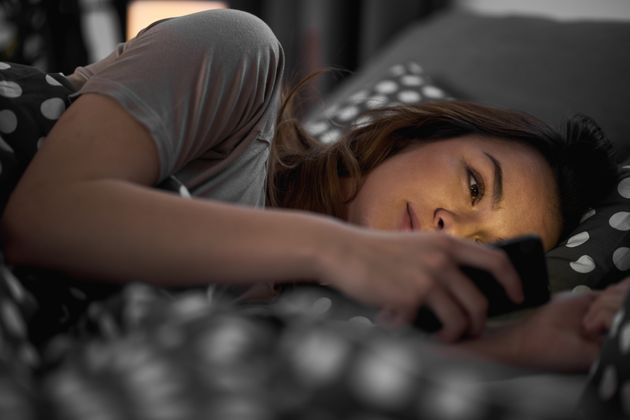This September HuffPost UK is challenging readers to back away from their social media feeds for 28 days in order to find new balance in our relationships with technology. Coinciding with the Royal Society For Public Health’s campaign Scroll Free September, we’ll be delivering the tips and motivation you need via a daily email. And the best part? You can sign up to start the challenge at any point in the month. So what are you waiting for?
As a teen, the instruction of switching on flight mode elicited a hard eye-roll every time I was sat on a plane about to take off.
How would I manage a whole three hours without checking Facebook? What about my friends’ regular and completely unimportant SMS updates? What if I missed something on Instagram, Snapchat, email? (It’s safe to say adolescent me needed to get a grip.)
I like to think I’ve come a long way since those days. Flight mode has become a force for good and I’m proud to say I use it without hesitation every single day. And no, my job doesn’t involve lots of travelling.

Flight mode (or aeroplane mode) is a feature on smartphones and other devices which disables signal-transmitting technologies meaning you can’t access Wi-Fi, voice calls, text messages, 3G/4G and Bluetooth – although you can turn Wi-Fi back on manually.
In other words, it means you can’t really use your device to connect with other people. And in a world where we’re increasingly switched on – a recent survey from Better Buy Insurance found 18-24-year-olds use their phones a staggering 81 times per day – flight mode has become a very precious function to me.
Every night when I get into bed, somewhere between moisturising my face and my head hitting the pillow, I swipe my screen up and press the bright orange button with the aeroplane icon. The premise is simple – it stops the temptation of scrolling Twitter or Instagram for hours on end; it deters me from replying to messages on Whatsapp and it prevents me from checking my emails (a bright red notification tells me I currently have 10,368 unread).
My love affair with the setting doesn’t end there either – I know, I’m too much. Sometimes at the weekend I’ll keep my phone on aeroplane mode for an entire day (providing I don’t have to use Google maps or arrange to meet someone). And guess what? It’s a real treat. 10/10 would do again.
I decided to make the change about two years ago after interviewing various sleep specialists on what it takes to get a good night’s kip. “Remove your phone from your bedroom altogether,” one told me. “Stop scrolling at night, the blue light will keep you awake,” said another. I didn’t have to be told again.
Blue light emitted from phones is a problem when it comes to getting some shut-eye because it suppresses the hormone melatonin which affects the body’s circadian rhythm. This means your brain becomes stimulated when it should be shutting up shop for the night. A 2017 study found exposure to blue light reduced a person’s duration of sleep by approximately 16 minutes and people were likely to wake up 6-8 times in the night. Not good.
There’s also the issue of phones bleeping once you’ve drifted off, which can make for a disruptive night’s sleep. And, of course, the content of the incoming messages themselves could trigger all kinds of emotions – excitement or anger, you’ll probably feel far more awake.

What is the impact of this? Continued sleep deprivation raises the risk of a number of chronic health problems, according to Harvard Health, such as obesity, diabetes, high blood pressure and heart disease. A study from this year suggests scrolling on your phone late at night could heighten your risk of mood disorders. It was also associated with decreased happiness and health satisfaction, and – ironically – a higher risk of reporting loneliness.
Since switching to a flight mode-filled existence, I have to say my ability to get to sleep in time for a seven to eight-hour snooze has improved dramatically. I was already pretty good at drifting off quickly (it runs in the family) but I’ve definitely noticed a difference between scrolling-Twitter-for-half-an-hour-Tasha and ahoy-there-flight-mode-Tasha: the latter could win the sleep Olympics regularly and she definitely wakes up mid-slumber far less often.
Don’t get me wrong, there are times when I don’t switch straight to flight mode because I’ve seen a notification while setting my morning alarm or I’ve had that uncontrollable urge to check Twitter (I’m only human, after all). But every time this happens my sleep takes a hit – it takes me ages to get to sleep, I drift in and out of slumber throughout the night, and I end up tired and cranky the next day.
So thank you, oh mighty inventor of flight mode, for helping me get a good night’s kip. If you’re feeling up to the scroll-free challenge, try switching on aeroplane mode each night and let me know if it helps.


